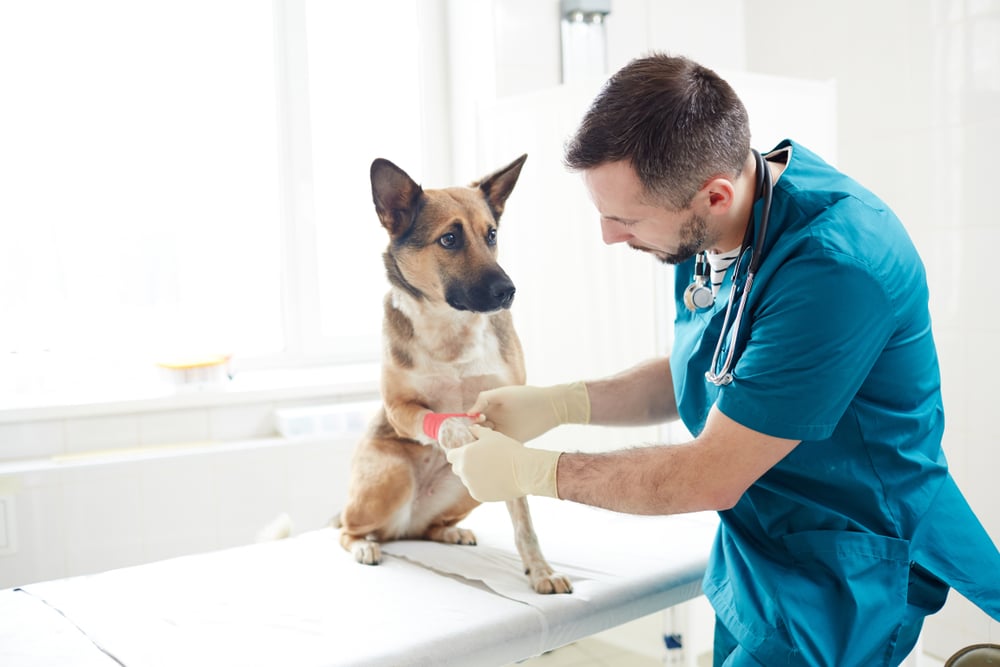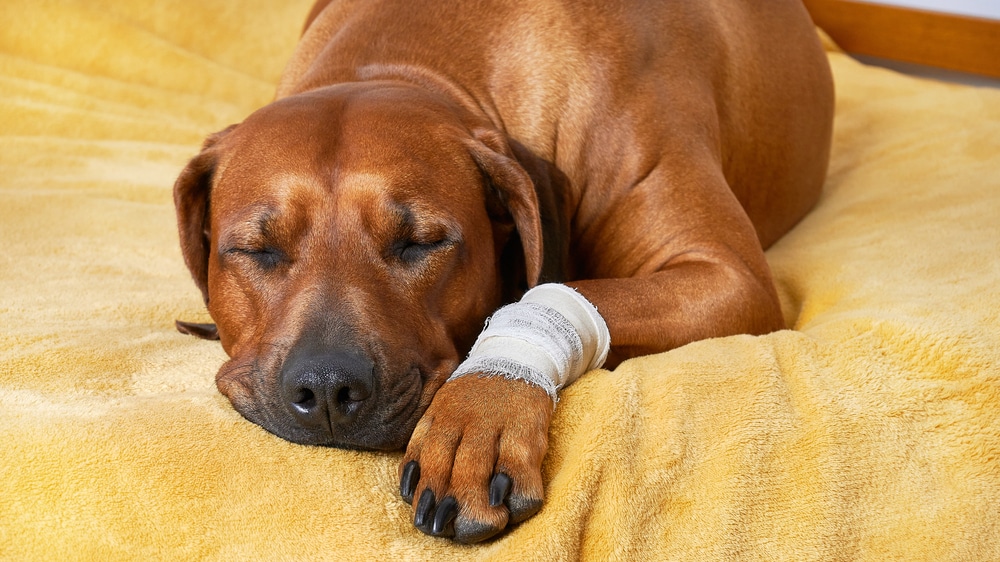You go for a walk, and on your way back, you see your dog limping. When you pick up its leg, you see it’s bleeding. Your dog is either not happy with you trying to touch the spot, or it is just trying to lick it and clean it itself. So, what can you do to help your dog when they get an open wound? What are the best ways to disinfect a dog’s wound?
The best way to disinfect a dog’s wound is to make sure your dog can’t bite you, shave the area, clean it with warm water, use a dog-approved antiseptic, use an antimicrobial ointment, and prevent your dog from licking or getting at the area. If you’re uncomfortable doing this or if the wound is bad enough, always remember you can contact a professional for help.
Table of Contents
Some Information About Wounds
Wounds are injuries to the skin or the deeper tissues, which can be classified as open (a scratch, a cut, a laceration) or they can be closed (a contusion, a bruise). Another way to classify wounds is whether they’re clean or contaminated.
When we say a clean wound, we almost always mean something that is done under sterile conditions, such as surgery. Everything else not done by the surgeon contains bacteria that can enter the bloodstream and cause more serious problems. Even simple cuts your dog has on its skin could be considered a contaminated wound.
What Do You Need To Clean And Disinfect A Dog’s Open Wound?
Nowadays. it is simple to clean a dog’s open wound because there are commercial first aid kits that are designed especially for your dog. But don’t worry if you don’t have them at your house. There are plenty of things we all have in our home that could help in disinfecting your dog’s wound:
- Electric clippers or scissors or razor: the reason why you should have them is that they will help you remove the hair around the skin that is cut
- Warm water
- Clean cloth or towel or a gauze
- Hydrogen peroxide or 2% chlorhexidine
- Self-adhesive bandage material
If you have any other antiseptic or antimicrobial ointments, please do not put them on the wound before talking to your vet because some of them may not be suitable for a dog.
Steps To Clean And Disinfect Your Dog’s Wound

Here are the steps.
Pick A Spot To Do The Cleaning
Depending on whether your dog is big or small, you will need to make yourself comfortable in order to clean the wound. So, either put the dog on the table or work on the ground. It all depends on you and your furry friend.
Make Sure Your Dog Can’t Bite You And Shave The Hair Around Its Wound
You need to shave or clip the hair around the wound. For this and for every procedure afterward, it would be good to have a second pair of hands, just to hold your dog for you. If your dog is prone to biting, putting a muzzle on it is advised.
Clean The Area With Warm Water
Wash the area using warm water, and use a dry cloth to remove all the dirt and debris from the wound. At this point, your dog may not be happy because you are kind of rubbing the wound.
Use An Antiseptic
Pour some antiseptic over the wound. You can use chlorhexidine, povidone-iodine, or hydrogen peroxide. Let it stay like that for a minute or two, and then wash it away.
Use An Antimicrobial Ointment
After you have consulted your vet and they’ve given you the go-ahead signal, you can use an antimicrobial ointment that contains different antibiotics. It is advisable that you avoid using ointments or creams that contain corticosteroids.
Prevent Your Dog From Licking The Wound
It is advisable to try and keep your dog from licking the wound for at least ten minutes so that the ointment can work. Dogs are not known to be happy to have things wrapped around their legs, so do not be surprised if you put a bandage on the wound and it gets instantly removed. Dog cones or other alternatives can help prevent this.
Consult A Professional When Needed
Keep in mind that if the wound seems quite deep and far more serious to you, then do not do anything on your own. Just pick up your dog and take it to your vet. In those cases, the dog may need to be lightly sedated, and they may require a suture or two.
Conclusion: What Are The Best Ways To Disinfect A Dog’s Wound?
Dogs are active creatures, and believe it or not, even couch potatoes can get cuts or bruises on their one-time walk or when going to the potty. There’s no need to panic, though, because this happens from time to time. If it doesn’t seem serious to you, just follow the steps above, and your pooch will be on the road to recovery in no time! However, if the wound seems deep to you, please take your dog to the vet.
So, is your dog adventurous and gets lots of open wounds? Are you just preparing in case they do? Let us know in the comments below!
